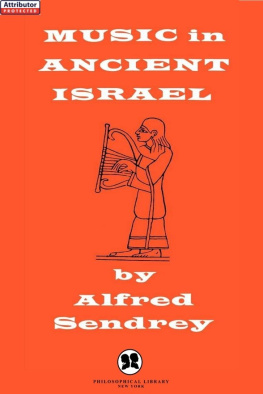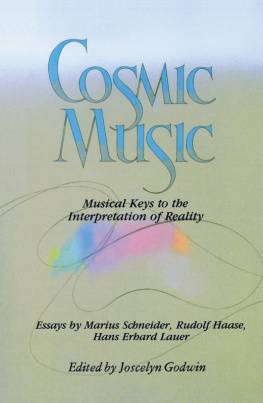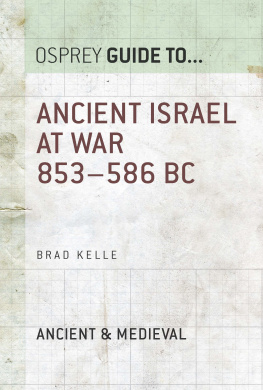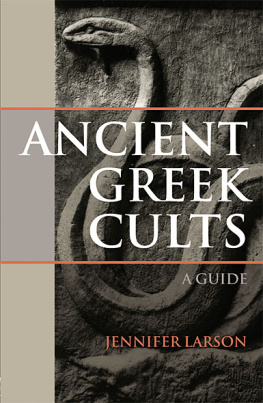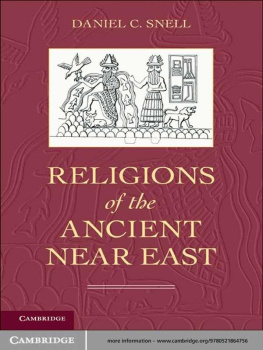Music in Religious Cults of the Ancient Near East
Music in Religious Cults of the Ancient Near East presents the first extended discussion of the relationship between music and cultic worship in ancient western Asia. The book covers ancient Israel and Judah, the Levant, Anatolia, Mesopotamia, Elam, and ancient Egypt, focusing on the period from approximately 3000 bce to around 586 bce. This wide-ranging book brings together insights from ancient archaeological, iconographic, written, and musical sources, as well as from modern scholarship. Through careful analysis, comparison, and evaluation of those sources, the author builds a picture of a world where religious culture was predominant and where music was intrinsic to common cultic activity.
John Arthur Smith was an independent scholar and organist based in Norway. He was the author of Music in Ancient Judaism and Early Christianity (Ashgate, 2011), and had published numerous journal articles, book chapters, and articles in reference works.
Routledge Research in Music Series
Global Percussion Innovations
The Australian Perspective
Louise Devenish
Double Lives
Film Composers in the Concert Hall
James Wierzbicki
John Williams
Changing the Culture of the Classical Guitar
Michael OToole
Paul Dukas
Legacies of a French Musician
Edited by Helen Julia Minors and Laura Watson
The Consolations of History in Richard Wagners Gtterdmmerung
Alexander Shapiro
From Music to Sound
The Emergence of Sound in 20th- and 21st-Century Music
Makis Solomos
Performing Arts in Transition
Opera, Dance, and Theatre in European and Nordic Countries around 1800
Edited by Randi M. Selvik, Svein Glads and Anne Margrete Fiskvik
Australias Jindyworobak Composers
David Symons
For more information about this series, please visit: www.routledge.com/Routledge-Research-in-Music/book-series/RRM
First published 2021
by Routledge
2 Park Square, Milton Park, Abingdon, Oxon OX14 4RN
and by Routledge
52 Vanderbilt Avenue, New York, NY 10017
Routledge is an imprint of the Taylor & Francis Group, an informa business
2021 John Arthur Smith
The right of John Arthur Smith to be identified as author of this work has been asserted by him in accordance with sections 77 and 78 of the Copyright, Designs and Patents Act 1988.
All rights reserved. No part of this book may be reprinted or reproduced or utilised in any form or by any electronic, mechanical, or other means, now known or hereafter invented, including photocopying and recording, or in any information storage or retrieval system, without permission in writing from the publishers.
Trademark notice: Product or corporate names may be trademarks or registered trademarks, and are used only for identification and explanation without intent to infringe.
British Library Cataloguing-in-Publication Data
A catalogue record for this book is available from the British Library
Library of Congress Cataloging-in-Publication Data
A catalog record has been requested for this book
ISBN: 978-0-367-48633-4 (hbk)
ISBN: 978-1-003-04200-6 (ebk)
I dedicate this book to the memory of my sister
Malinda Gladys Hammond (ne Smith), 7 June 1949 23 September 2019
The origin, purpose and frame of reference of this book
This book has its origin in ideas briefly sketched in my book Music in Ancient Judaism and Early Christianity (Ashgate, 2011; reissued in paperback by Routledge, 2016) and subsequently developed in my chapter Music in the Second Edition of The Early Christian World, edited by Philip Esler (Routledge, 2017), and in two articles in reference works (Smith 2017b, 2020). Its twofold aim is to explore the relationship between music and religious cults of the ancient Near East, and to approach an understanding of the idiom of the music itself.
Ancient Near East is a term used by historians of ancient western Asia to designate the vast geographical area of western Asia between the mountains of southwestern Iran and the Mediterranean Sea, during the period from roughly 8000 to 300 bce. The peoples of that region were many; their territorial boundaries subject to change and not always clearly defined. Their cultures were individual and diverse and were marked by strong adherence to varied patterns of familial, social and ideological traditions.
Despite cultural diversity, there was also a measure of cultural unity. The ancient religious cultures, in particular, displayed a considerable number of correspondences and similarities across territorial boundaries. In some cases, those correspondences and similarities manifested themselves in close parallels. While there is rarely sufficient evidence to prove that such parallels were the result of direct influence, the very existence of the phenomenon suggests the presence of an underlying common core of religious culture.
Music was part of that religious culture. Indeed, there is clear evidence that music was associated with many types of cultic activity common to religious cultures throughout the Near East in antiquity. In this book, insights from ancient archaeological, iconographic, written and musical sources, as well as from modern scholarship, are brought together to illuminate the subject and to reveal something of the variegated sound-world of Near Eastern cultic music. Details of the particular chronological span and geographical area covered by the book are given in .
The chosen point of departure for most of the discussions in the book is the religious culture of ancient Israel and Judah. This is not meant to reflect value judgements about the importance or status of ancient Israelite religion compared with other religions of the ancient Near East. The choice is motivated simply by two practical considerations. One is that information about ancient Israelite and Judahite religious culture in ancient sources is more comprehensive and more connected than is the case with other ancient Near Eastern religions, with the possible exception of ancient Egyptian religion. The other consideration is that a large quantity of the ancient literary source material about ancient Israelite and Judahite religious culture is contained in the Hebrew Bible/Old Testament and its closely related ancient literature, authoritative versions and translations of which especially of the Hebrew Bible are readily available and therefore likely to be familiar to a wide readership. Thus, this book looks out, as it were, across the whole of the ancient Near East from its vantage point in the southwestern Levant.
Bibliographical context
An enormous amount of serious literature about the ancient Near East has been published since scientific archaeological explorations of sites in Egypt and Mesopotamia began in the early nineteenth century. Nevertheless, there has hitherto been no monograph dedicated to music and religion in the region. This is surprising considering the coverage that has been given to topics concerned with ancient Near Eastern religions on the one hand, and what has come to be called archaeomusicology on the other. It is all the more surprising since a large quantity of the written material extant from the Near East, and a substantial proportion of the archaeological and iconographic remains, have to do with religion in one way or another.



